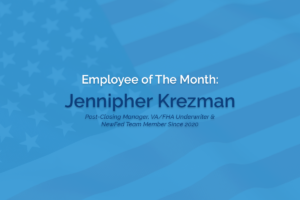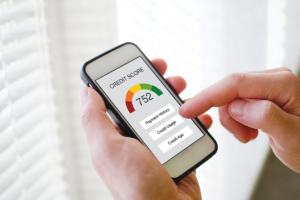At NewFed, we stand alongside women on their journey to homeownership, acknowledging both the strides made and the persisting challenges. The real estate landscape has transformed significantly, with single women owning more homes than single men. This shift in dynamics is highlighted by women’s increasing wealth and power in the U.S.
According to research findings from this NextGen report, women have emerged as formidable players in the real estate market. They represent the second largest cohort of homebuyers today, double that of single men (19% v. 9%). Despite this shift, women report feeling less trusting of housing and finance professionals, more uncertain about where to start the process, and less satisfied with their overall experience after the home purchase.
Despite legal advancements, women continue to face challenges in accessing fair lending practices and negotiating favorable terms. Understanding these complexities is vital for developing strategies to address the unique needs of women, particularly those from diverse backgrounds. For women considering homeownership, navigating the process with confidence and knowledge is essential. Here are some key insights and advice:
Breaking Barriers
Historical Context:
The journey towards gender equity in homeownership has been difficult. It wasn’t until as recently as 1974 that women were legally protected to obtain a mortgage without a cosigner. Before the passage of the Fair Housing Act’s prohibitions against “sex” discrimination in housing-related transactions (1968) and the protections of the Equal Credit Opportunity Act (1974), it was common for a widow to need a male relative as a cosigner. Under federal law, women had no legal recourse for this or other lending discrimination. Historical barriers, including discriminatory lending practices, have impacted women’s access to homeownership.
Inequities by Race & Income:
Studies, such as the Urban Institute report, reveal disparities among women from different racial and ethnic backgrounds. Single white women have seen significant gains in homeownership rates. In contrast, women of color continue to face barriers such as income inequality and housing affordability challenges. Racial homeownership disparities have persisted for decades, with the Black homeownership rate falling below homeownership rates for all racial and ethnic groups since 2010. The homeownership gap between Black and white households is hovering around 30% — wider than it was in 1960 when race-based housing discrimination was still legal.
Highlights of Women's Influence
Wealth & Power:
Research findings, like those from the NextGen report, underscore women’s increasing wealth and power in the U.S. Women are making significant strides in homeownership and shaping preferences and trends in the real estate market. There’s been a 30% uptick in women reporting making financial decisions for their household. According to the Urban Institute, the share of women heads of household increased 24.3% from 1990 to 2019.
Women aren’t waiting around, either! In a U.S. report by Bank of America, 65% of single women said they would rather not wait until marriage to buy a home, regardless of age. This is in addition to the fact that nearly 30% of all female homeowners in the U.S. purchased a home while unmarried.
State-Level Trends:
Examining states where women hold a greater share of homeownership can provide insights into regional variations and preferences among women in different areas. Across the United States, homeownership reveals intriguing trends, notably in single-female ownership. Delaware leads the pack with the highest proportion of homes owned by single women, at 15.34% of owner-occupied households, surpassing single men by 5.89%. Louisiana and Mississippi follow suit, with single women owning around 15.19% and 14.84% of owner-occupied households, respectively.
Conversely, states like New Mexico, North Dakota, and Alaska see higher single-male homeownership rates, with ownership percentages around 12.44% to 12.85%. Alaska, North Dakota, and South Dakota stand out, with single men owning a higher share of homes than single women, all above a 2.08% gap. These variations in homeownership patterns shed light on the evolving dynamics within the housing market. While some states witness a surge in single female homeownership, others see a more balanced distribution or even a tilt towards single male ownership.
Tips for Success
Financial Empowerment:
Use resources to understand your credit score, explore mortgage options, and create a budget aligned with your goals. Knowing your rights under fair lending laws, such as those outlined by HUD, is crucial for advocating for yourself throughout the process.
Financial empowerment is a breath of freedom for women, who, on average, have far less financial security than their male counterparts. According to a MassMutual Women’s Retirement Risk Study, only 15% of women planning to retire within 15 years or already retired report needing to be more knowledgeable about managing their savings and investments. The report also mentioned that women outlive men by an average of five years, which means they need their savings to last longer. Despite their higher savings rate and higher participation rate in workplace retirement plans, they earn less during their working years than men, which leaves them with smaller average 401(k) account balances.
Build a Support Network:
Surround yourself with experienced professionals who understand the unique challenges faced by women in the market. These professionals include real estate agents, mortgage loan officers (like us), and financial advisors who can provide personalized guidance tailored to your needs. Seek advice and tips from your female friends and family who have gone through the process and see if they have anything you can glean from their experiences, too.
Research and Due Diligence:
Arm yourself with knowledge about market trends, property values, and neighborhood demographics. Common questions to ask yourself/your network might include: How safe is this neighborhood? What are the historical trends in property value in this area? What are the local schools like? How close is the property to public transit? Are there any seasonal expenses to note? Conduct thorough research to make informed investment decisions and to negotiate confidently. For a complete list of questions to ask yourself and mortgage professionals, see this Women in Leadership Foundation article. You can keep up with market trends through articles and reports from the National Association of Realtors.
Plan for the Future:
Consider the long-term implications of homeownership on your financial well-being relative to career growth, family planning, and retirement savings to ensure a sustainable investment and environment. Don’t be shy about buying a home when the market isn’t ideal, especially if you’ve found your dream home. Now is always a good time to start building (or keep building) your equity so long as your financial status can support the investment.
In light of National Women’s History Month, as we witness women’s increasing financial independence and influence in the real estate market, it’s essential to recognize the journey that led to this moment. For women considering homeownership, this history underscores the significance of their achievements and the importance of leveraging resources and support to navigate the path ahead.
At NewFed Mortgage, we are committed to empowering women to achieve their homeownership dreams. Our dedicated professionals are here to provide personalized guidance for every stage of your life.







